Top Metrics to Measure Customer Support Performance
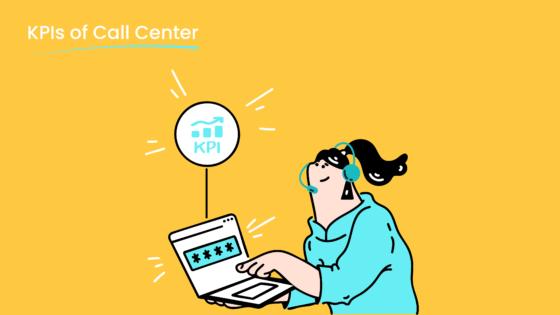
Customer support KPIs are essential for shaping success in 2025. These key performance indicators help you measure critical aspects of customer service, like satisfaction and retention. For example, customer satisfaction is projected to grow by 38%, while average handle time may drop by 30%. Tracking these metrics ensures you can optimize processes and deliver better customer experiences. Companies using data-driven tools, like Sobot's Voice/Call Center, often see up to a 20% boost in operational efficiency. By leveraging analytics, you gain actionable insights to improve customer interactions and streamline workflows.
Efficiency Metrics for Customer Support Teams
First Response Time: Why Speed Matters
First response time (FRT) is one of the most critical customer service metrics. It measures how quickly your team acknowledges a customer inquiry. A fast FRT creates a positive first impression and reassures customers that their concerns are being addressed. For live chat, a benchmark FRT is 45 seconds or less, while email responses should ideally occur within four hours. On phone calls, 53% of customers expect support within three minutes.
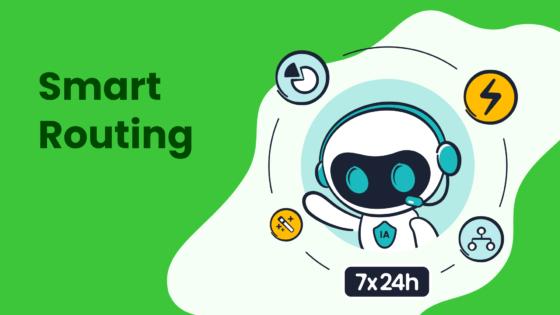
Luis Hernandez, VP of Customer Success at Geckoboard, emphasizes, “Timeliness and speed have a direct correlation with satisfaction.” This highlights the importance of quick responses in enhancing customer interactions. Tools like Sobot’s Voice/Call Center can help you achieve faster FRT by leveraging features like smart call routing and real-time monitoring. These capabilities ensure your team responds promptly, improving customer satisfaction and reducing the rate of ticket resolution delays.
Average Resolution Time: Reducing Customer Wait Times
Average resolution time (ART) tracks how long it takes to fully resolve a customer issue. Customers value efficiency, and reducing the time to resolution directly impacts their satisfaction. For example, industries like e-commerce and financial services aim for ART benchmarks of 24 hours or less.
Tracking ART allows you to identify bottlenecks in your workflows. Sobot’s unified workspace consolidates customer data, enabling agents to resolve issues faster without switching between systems. By automating repetitive tasks and providing AI-powered insights, Sobot’s solutions help reduce average resolution time while maintaining high-quality service. This optimization not only improves resolution rates but also enhances overall customer support performance.
Agent Utilization Rate: Maximizing Team Productivity
Agent utilization rate measures how effectively your team uses its time. High utilization rates indicate that agents are productive and focused on resolving customer issues. Monitoring this metric helps you balance workloads and avoid burnout.
Data-driven tools like Sobot’s Voice/Call Center provide real-time analytics to track agent productivity and occupancy rates. These insights allow you to optimize team configurations and improve contact center metrics. For example, businesses using Sobot’s solutions report a 30% increase in agent efficiency, ensuring that resources are allocated effectively to enhance customer interactions and resolution rates.
Ticket Backlog: Managing Workload Effectively with Sobot
A ticket backlog occurs when unresolved customer inquiries pile up, creating delays and reducing efficiency. Managing this backlog is crucial for maintaining smooth operations and ensuring customer satisfaction. By addressing backlogs effectively, you can improve response times, reduce agent stress, and enhance overall workload efficiency.
Why Ticket Backlog Matters
A growing backlog signals capacity issues within your support team. It can lead to longer wait times and frustrated customers. For example, Hospitable, a property management platform, resolved 500 backlogged queries by integrating an AI chatbot. This change significantly improved their support operations and reduced agent workloads. Similarly, McKinsey’s 2022 State of Customer Care Survey found that 65% of customer care leaders reported lighter workloads after implementing enhanced self-service options.
Key Metrics to Monitor
Tracking specific metrics helps you manage ticket backlogs effectively. Here’s how they impact workload efficiency:
| Metric | Impact on Workload Efficiency |
|---|---|
| Tickets by Hour | Identifies performance needs and resource allocation. |
| Number of Tickets | Highlights how volume affects resolution time. |
| Backlogs | Indicates capacity issues and potential delays. |
| Effective Queue Management | Reduces response times and boosts efficiency. |
How Sobot Can Help
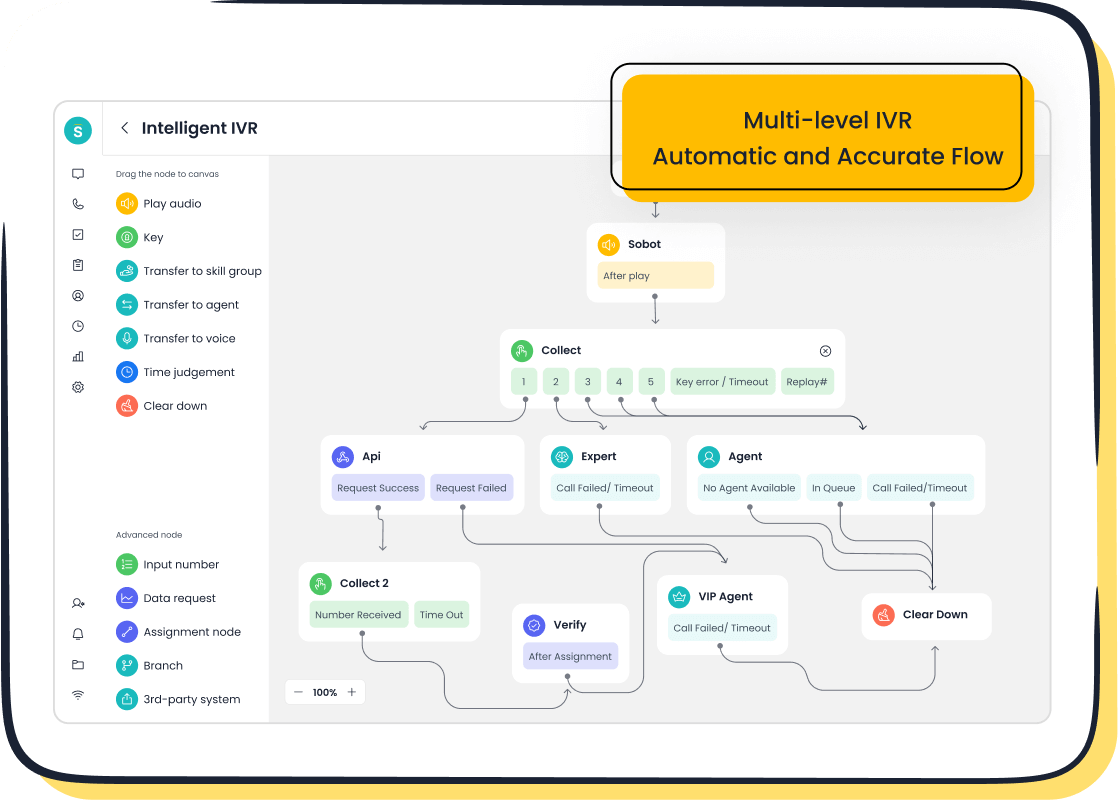
Sobot’s Voice/Call Center offers tools to streamline backlog management. Features like smart call routing and a unified workspace allow agents to handle tickets efficiently. By consolidating customer data and automating repetitive tasks, Sobot reduces resolution times and prevents backlogs from growing. Businesses using Sobot report a 30% increase in agent efficiency, ensuring smoother workflows and happier customers.
Managing your ticket backlog with Sobot not only improves operational efficiency but also strengthens customer trust. Start optimizing today to deliver faster, more reliable support.
Customer Satisfaction KPIs to Prioritize
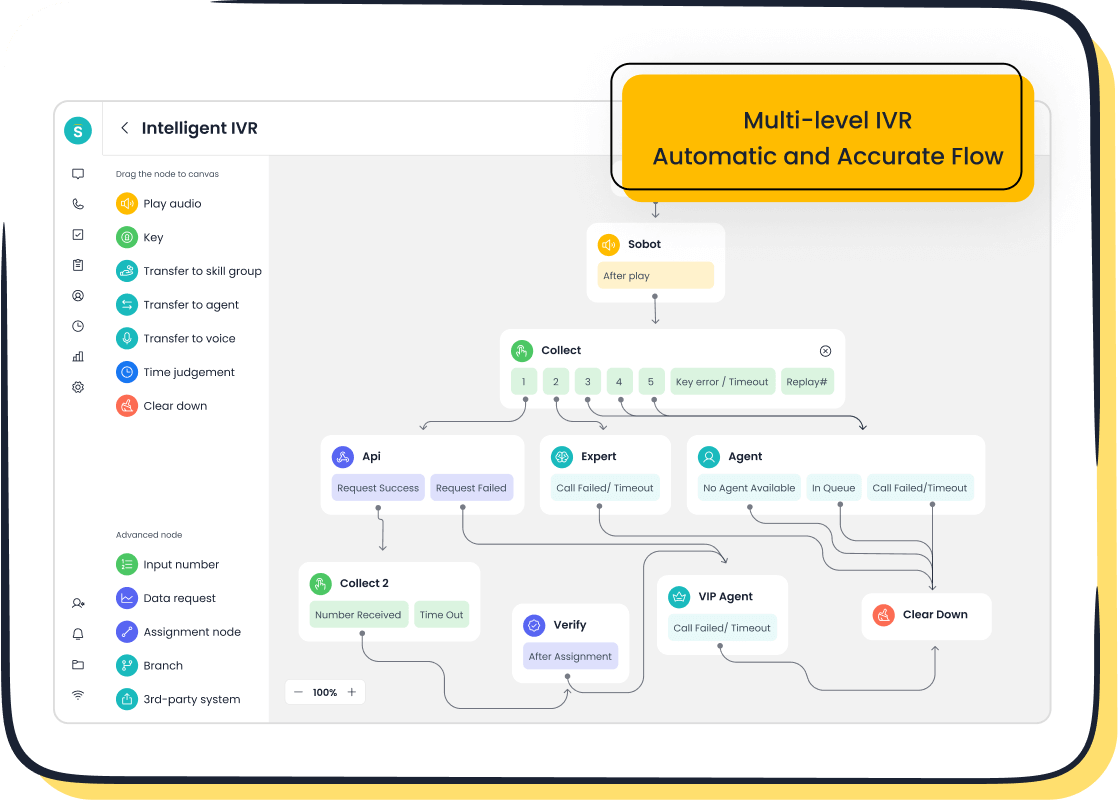
Customer Satisfaction Score (CSAT): Measuring Customer Happiness
Customer satisfaction score (CSAT) is a vital metric for understanding how happy customers are with your service or product. It measures satisfaction after specific interactions, such as resolving a support ticket or using a new feature. CSAT surveys typically ask customers to rate their experience on a scale from 1 to 5 or 1 to 10. Higher scores indicate better customer satisfaction, which directly impacts retention and conversion rates.
For example, industries like e-commerce and healthcare consistently achieve CSAT scores above 80, reflecting strong customer satisfaction. In 2025, consulting firms led the way with an average CSAT score of 84, while education scored 64. These benchmarks highlight the importance of tracking CSAT to improve customer experience.
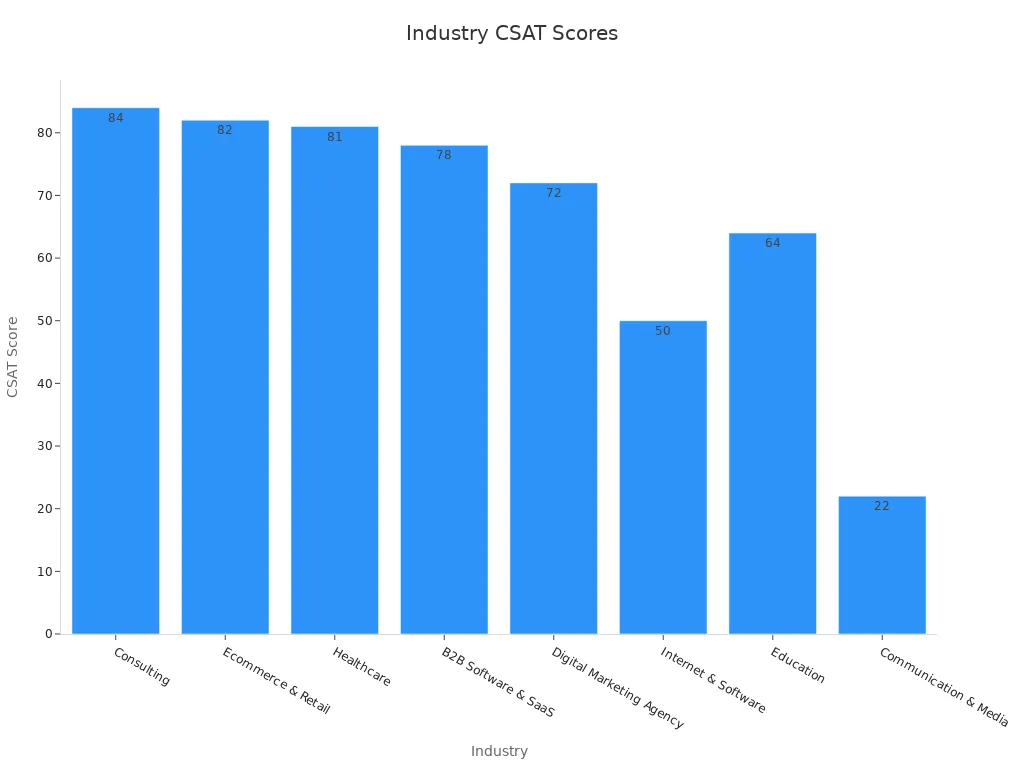

Sobot’s Voice/Call Center can help you boost CSAT by providing tools like smart call routing and AI-powered insights. These features enable faster resolutions and personalized interactions, ensuring customers leave every interaction satisfied.
Net Promoter Score (NPS): Tracking Customer Advocacy
Net promoter score (NPS) measures how likely customers are to recommend your business to others. It categorizes customers into promoters, passives, and detractors based on their responses to a simple question: “How likely are you to recommend us?” Scores range from -100 to 100, with higher scores indicating stronger customer advocacy.
NPS is a powerful indicator of customer loyalty and long-term satisfaction. Businesses with high NPS scores often see increased conversion rates and stronger customer retention. For example, companies in the financial services sector frequently achieve NPS scores above 50, showcasing their ability to turn satisfied customers into brand advocates.
Sobot’s omnichannel solution enhances NPS by streamlining customer interactions across platforms. By providing seamless communication and reducing effort during resolutions, Sobot helps you create experiences that customers are eager to share with others.
Customer Effort Score (CES): Simplifying Customer Interactions
Customer effort score (CES) evaluates how easy it is for customers to resolve issues or complete tasks. It focuses on the effort required during interactions, such as navigating a website or contacting support. Lower effort scores indicate smoother customer experiences, which lead to higher satisfaction and better resolution rates.
A CES survey might ask, “How easy was it to resolve your issue today?” Responses typically range from “Very easy” to “Very difficult.” Businesses that prioritize CES often see improved customer satisfaction and reduced churn rates.
Sobot’s AI-powered chatbots and unified workspace simplify customer interactions by automating repetitive tasks and providing agents with comprehensive customer data. These tools reduce effort for both customers and agents, ensuring faster resolutions and better overall experiences.
| KPI Name | Description |
|---|---|
| Customer Satisfaction Score | Measures sentiment towards a product, service, or interaction, typically through a simple survey. |
| Customer Effort Score | Assesses the effort required by customers to resolve issues, indicating the ease of service provided. |
Tracking CES alongside CSAT and NPS ensures you deliver exceptional customer support while building loyalty and advocacy.
Post-Interaction Feedback: Gaining Actionable Insights
Post-interaction feedback is a powerful tool for understanding your customers and improving their satisfaction. Gathering feedback after each interaction allows you to identify what works well and what needs improvement. This process ensures your team can make data-driven decisions to enhance the customer experience.
Analyzing every customer interaction is essential for gaining actionable insights. Traditional quality assurance tools often provide limited data, leaving gaps in understanding customer needs. By leveraging AI-powered solutions, you can efficiently analyze large datasets, uncover trends, and address recurring issues in real time. For example, if multiple customers report delays in response times, you can prioritize resolving this high-impact issue to improve overall satisfaction.
Organizing feedback into categories further refines your approach. Grouping comments by themes, such as product quality or service speed, helps you focus on areas that matter most to your customers. Trend analysis of recurring issues also highlights widespread needs, enabling you to allocate resources effectively.
A centralized feedback dashboard can transform how your team tracks and acts on customer sentiment. Dashboards provide a real-time view of satisfaction levels and the impact of recent changes. They also foster accountability by ensuring everyone in your organization stays aware of customer needs. Sobot’s Voice/Call Center includes advanced analytics tools that help you monitor feedback and satisfaction metrics seamlessly. These tools empower your team to make informed decisions and deliver exceptional service.
By prioritizing post-interaction feedback, you not only improve satisfaction but also build stronger relationships with your customers. Start leveraging these insights today to create a more responsive and customer-focused support system.
Retention and Loyalty Metrics
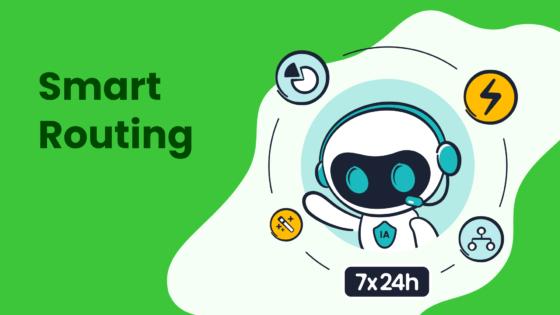
Customer Retention Rate: Building Long-Term Relationships
Customer retention rate measures the percentage of customers who continue to engage with your business over a specific period. Retaining customers is more cost-effective than acquiring new ones. Studies show that acquiring a new customer costs five times more than retaining an existing one. Moreover, increasing retention by just 5% can boost profits by 25% to 95%.
Repeat customers also contribute significantly to revenue. For instance, they spend 67% more than new customers, and 61% of small businesses report that over half their revenue comes from repeat buyers. By focusing on retention, you can build long-term relationships that drive sustainable growth.

Sobot’s omnichannel solution helps you improve customer retention by streamlining interactions across platforms. Its unified workspace ensures agents have access to complete customer histories, enabling personalized service that strengthens loyalty.
| Metric | Value |
|---|---|
| Cost of acquiring new customer | 5x more than retaining existing |
| Increase in retention profits | 25-95% increase |
Churn Rate: Identifying Retention Challenges
Churn rate tracks the percentage of customers who stop using your product or service within a given timeframe. A high churn rate signals underlying issues that need immediate attention. Common causes of churn include ineffective onboarding, weak relationships, and poor customer service. For example, 23% of churn occurs due to ineffective onboarding, while 14% stems from poor service.
Understanding these challenges allows you to address them proactively. Sobot’s Voice/Call Center provides tools like real-time monitoring and AI-powered insights to identify and resolve issues before they lead to churn. By improving customer experience and support quality, you can reduce churn and enhance retention.
| Cause of Churn | Percentage |
|---|---|
| Ineffective onboarding | 23% |
| Weak relationships | 16% |
| Poor customer service | 14% |
Lifetime Value (LTV): Understanding the Financial Impact of Retained Customers
Lifetime value (LTV) measures the total revenue a customer generates throughout their relationship with your business. High LTV customers are more loyal, cost less to serve, and contribute consistently to revenue. Calculating LTV helps you identify high-value segments, refine marketing strategies, and justify investments in loyalty programs.
For example, analyzing LTV by customer segments enables you to allocate resources effectively. Sobot’s analytics tools provide visibility into LTV, helping you forecast revenue and plan retention strategies. By focusing on high-LTV customers, you can maximize ROI and ensure long-term profitability.
- Benefits of LTV:
- Identifies high-value customer segments for targeted acquisition.
- Aligns strategic investments with profitability goals.
- Improves forecasting and retention planning.
Customer Advocacy Rate: Turning Customers into Promoters
Customer advocacy rate measures how effectively you turn satisfied customers into active promoters of your brand. This metric highlights the strength of your customer relationships and their willingness to recommend your business. Advocates not only boost your reputation but also drive tangible business outcomes.
Why Advocacy Matters
Advocates act as your brand’s ambassadors. Their recommendations carry more weight than traditional advertising. Here’s how advocacy benefits your business:
- Increased Brand Awareness: Advocates promote your brand to new audiences, expanding your reach.
- Higher Conversion Rates: Personal recommendations often lead to better sales outcomes.
- Improved Customer Retention: Loyal advocates reinforce satisfaction, creating a cycle of loyalty and advocacy.
How to Boost Advocacy
Personalizing your advocacy initiatives can significantly enhance your conversion rate. Recognizing and rewarding advocates encourages them to promote your brand further. For example, offering incentives like discounts or exclusive access motivates customers to share their positive experiences.
Sobot’s omnichannel solution simplifies this process. By consolidating customer data, it enables you to identify satisfied customers and tailor advocacy programs. Tools like AI-powered analytics help track advocacy conversion rates, ensuring your efforts yield measurable results. Businesses using Sobot report improved customer retention and stronger advocacy rates, driving sustainable growth.
Advocacy in Action
Consider this dynamic: satisfied customers gain recognition and incentives, while your business receives referrals and social proof. This mutual benefit strengthens trust and credibility. For instance, Samsung achieved a 97% customer satisfaction rate with Sobot’s solutions, turning many of its customers into loyal advocates.
By focusing on your customer advocacy rate, you can transform satisfaction into long-term business success. Start leveraging this metric to build a community of promoters who champion your brand.
Financial and Operational Metrics
Cost Per Ticket: Balancing Efficiency and Quality
Cost per ticket (CPT) measures the average expense of resolving a customer inquiry. It helps you assess the balance between operational efficiency and service quality. Lower CPT indicates cost-effective operations, but it’s essential to ensure that quality doesn’t suffer.
CPT varies across regions. For instance:
| Region | Cost Per Ticket (Range) |
|---|---|
| North America | $6 - $40+ |
To reduce CPT without compromising quality, you can adopt tools like Sobot’s Voice/Call Center. Its unified workspace and AI-powered automation streamline workflows, enabling agents to handle more tickets efficiently. By automating repetitive tasks and providing real-time insights, Sobot helps you optimize resource allocation and reduce operational costs.
Tracking CPT alongside metrics like first response time and resolution time ensures you maintain high service standards while managing expenses effectively.
Revenue Impact of Support: Linking Support to Business Growth
Customer support directly influences your revenue. High-quality support builds trust, leading to repeat business and referrals. Poor support, however, can result in lost customers and revenue. Businesses with low data quality lose around $3.1 trillion annually in the U.S., while poor data can reduce business value by 20%.
Key aspects of quality revenue include:
- Aligning with business strategy.
- Supporting profitability goals.
- Enhancing brand reputation and capabilities.
Sobot’s solutions, like its omnichannel platform, help you deliver exceptional support by integrating customer data and automating workflows. This ensures accurate, personalized interactions that drive customer loyalty and revenue growth. For example, Samsung achieved a 97% customer satisfaction rate using Sobot, turning satisfied customers into loyal advocates.
Call Abandonment Rate: Ensuring Seamless Customer Experiences
Call abandonment rate (CAR) measures the percentage of customers who hang up before speaking to an agent. High CAR indicates frustration and negatively impacts customer experience.
| Metric | Impact on Customer Experience |
|---|---|
| Call Abandonment Rate | High rates lead to frustration and dissatisfaction. |
| Queue Wait Time | Longer waits increase abandonment likelihood. |
| First Call Resolution | Low resolution rates result in repeat calls and higher CAR. |
Reducing CAR requires efficient call management. Sobot’s Voice/Call Center minimizes wait times with smart call routing and real-time monitoring. Its AI-powered voicebot handles simple queries, freeing agents to focus on complex issues. These features ensure seamless experiences, reducing abandonment rates and improving customer satisfaction.
By focusing on these financial and operational metrics, you can enhance efficiency, reduce costs, and deliver superior customer support.
Self-Service Success Rate: Empowering Customers with Sobot's Omnichannel Solution
Self-service success rate measures how effectively customers resolve issues without contacting your support team. This metric highlights the efficiency of your self-service tools and their impact on customer satisfaction. A high success rate indicates that customers can find answers quickly, reducing frustration and improving their overall experience.
Tip: Studies show that 67% of customers prefer self-service options over speaking to an agent. Providing robust self-service tools can significantly enhance satisfaction and reduce support costs.
Why Self-Service Success Rate Matters
Tracking this metric helps you understand how well your self-service channels perform. It also reveals areas where customers struggle to find solutions. For example, if your FAQ page has a low success rate, it may need clearer answers or better navigation.
Sobot’s Omnichannel Solution empowers customers with AI-driven chatbots and intuitive self-service portals. These tools handle repetitive queries, freeing your agents to focus on complex issues. Businesses using Sobot report a 30% improvement in self-service success rates, ensuring faster resolutions and happier customers.
Key Features That Drive Success
Sobot’s Omnichannel Solution includes features designed to optimize self-service:
- AI-Powered Chatbots: Provide instant answers to common questions.
- Unified Workspace: Consolidates customer data for seamless interactions.
- Analytics Tools: Monitor self-service performance and identify improvement areas.
| Feature | Benefit |
|---|---|
| AI Chatbots | Instant query resolution and reduced agent workload. |
| Unified Workspace | Ensures consistent and personalized customer experiences. |
| Performance Analytics | Offers actionable insights to refine self-service channels. |
Real-World Example
Samsung achieved a 97% customer satisfaction rate by integrating Sobot’s self-service tools. The AI-powered chatbots resolved repetitive queries, while the unified workspace streamlined agent workflows. This combination improved efficiency and reduced customer effort.
By focusing on self-service success rate, you empower customers to solve issues independently. Sobot’s Omnichannel Solution provides the tools you need to enhance this metric and deliver exceptional customer experiences. Learn more about Sobot’s solutions here.
Quality of Support Metrics
First Contact Resolution (FCR): Solving Issues on the First Try
First contact resolution (FCR) measures how often your team resolves customer issues during the initial interaction. Achieving a high first contact resolution rate is crucial for building trust and satisfaction. Research shows that FCR rates vary across industries, with an average of 71% for call centers. Improving FCR by just 1% can boost employee satisfaction by 2.5%. This metric not only enhances customer experience but also reduces repeat inquiries, saving time and resources.
To improve your FCR, focus on equipping agents with the right tools and information. Sobot’s unified workspace consolidates customer data, enabling agents to address concerns efficiently. Features like AI-powered voicebots and smart call routing ensure customers connect with the right agent immediately. These tools help you achieve a higher resolution rate while maintaining quality service. By prioritizing FCR, you can enhance both customer and employee satisfaction.

Escalation Rate: Minimizing the Need for Higher-Level Support
Escalation rate tracks the percentage of issues that require involvement from senior agents or managers. A low escalation rate indicates that your frontline agents handle most inquiries effectively. High escalation rates, however, may signal gaps in training or resources.
Reducing escalations starts with empowering your team. Provide comprehensive training and access to knowledge bases. Sobot’s Voice/Call Center supports this by offering real-time monitoring and analytics. These features help you identify common escalation triggers and address them proactively. For example, if a specific product issue frequently escalates, you can create detailed guides to assist agents. Lowering your escalation rate improves resolution efficiency and strengthens customer trust.
Agent Knowledge Score: Evaluating Expertise and Training
Agent knowledge score evaluates how well your team understands products, services, and processes. This metric reflects the effectiveness of your training programs and directly impacts your resolution rate. Agents with high knowledge scores resolve issues faster and more accurately, leading to better customer experiences.
Regular assessments and feedback are key to maintaining high knowledge scores. Sobot’s analytics tools provide insights into agent performance, helping you identify training needs. By integrating AI-driven solutions, you can offer personalized learning paths for agents. For instance, if an agent struggles with technical queries, targeted training modules can address this gap. A knowledgeable team ensures consistent and reliable resolutions, fostering customer loyalty.
Tip: Balancing quantitative metrics like knowledge scores with qualitative insights creates a solid foundation for continuous improvement. Metrics tailored to your needs drive a data-driven culture that enhances service quality.
Support Accuracy: Delivering Consistent and Reliable Solutions
Support accuracy plays a vital role in delivering consistent and reliable solutions to customers. When your team provides accurate information, customers trust your service and feel confident in the resolutions offered. Accuracy ensures that every interaction reflects real-world values, helping you avoid confusion and build stronger relationships.
Accurate data is essential for identifying gaps in your processes. It allows you to pinpoint areas where inconsistencies occur and make evidence-based decisions to address them. For example:
- Accurate data highlights disparities, enabling you to create policies that meet customer needs effectively.
- Consistency across datasets ensures reliable decision-making and avoids miscommunication.
- Precise information reflects real-world values, which is crucial for delivering dependable resolutions.
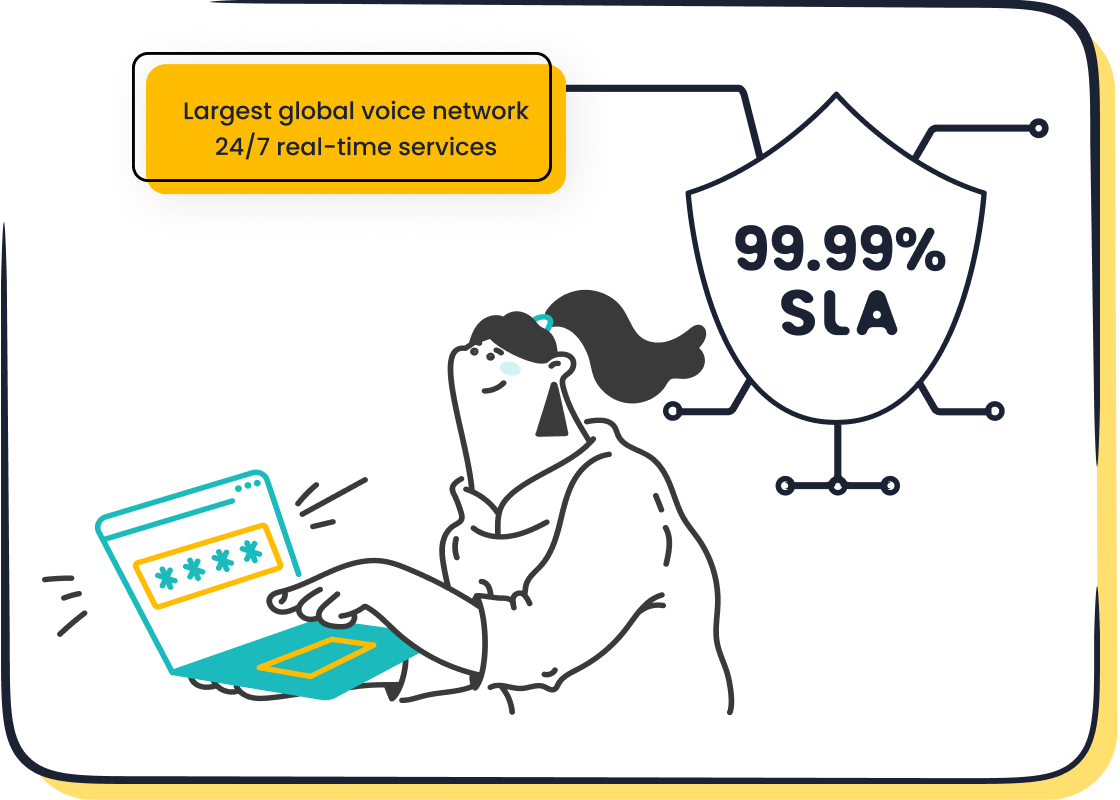
Sobot’s Voice/Call Center enhances support accuracy by equipping agents with tools like real-time monitoring and unified workspaces. These features consolidate customer data, ensuring agents have access to complete and up-to-date information. With AI-powered insights, your team can provide resolutions that align with customer expectations while maintaining consistency across channels.
Consider the impact of accurate support on customer satisfaction. A study by McKinsey found that businesses with consistent data practices saw a 20% improvement in customer trust. When customers receive reliable resolutions, they are more likely to remain loyal and advocate for your brand. Sobot’s solutions help you achieve this by automating repetitive tasks and reducing errors in data handling.
By prioritizing support accuracy, you not only improve resolution rates but also strengthen your reputation as a reliable service provider. Start leveraging tools like Sobot’s Voice/Call Center to deliver consistent and trustworthy solutions that exceed customer expectations.
Tracking customer support KPIs is essential for optimizing operations and delivering exceptional customer experiences. Metrics like customer retention rate and repeat customer revenue impact reveal the financial benefits of effective support. For instance, repeat customers generate 300% more revenue than first-time buyers, while retaining customers costs five times less than acquiring new ones. These insights emphasize the importance of prioritizing customer satisfaction and loyalty.
Sobot's Voice/Call Center equips businesses with tools to monitor and improve these metrics. Features like real-time analytics and AI-powered automation streamline workflows, enabling faster resolutions and personalized service. By leveraging data-driven solutions, you can enhance customer experiences, reduce churn, and build lasting relationships.
Adopting a data-driven approach ensures your support team meets customer expectations while driving business growth. Start optimizing today to transform your customer support into a competitive advantage.
FAQ
What are customer support KPIs, and why are they important?
Customer support KPIs measure your team's performance and customer satisfaction. They help you identify areas for improvement and optimize processes. For example, tracking metrics like first response time and customer satisfaction score ensures you deliver faster resolutions and better experiences. Learn more about KPIs here.
How can Sobot’s Voice/Call Center improve customer satisfaction?
Sobot’s Voice/Call Center enhances satisfaction by providing tools like smart call routing and AI-powered voicebots. These features reduce wait times and ensure accurate resolutions. Businesses using Sobot report a 30% increase in efficiency, leading to happier customers and stronger loyalty. Explore Sobot’s solutions here.
What is the best way to reduce ticket backlog?
You can reduce ticket backlog by automating repetitive tasks and optimizing workflows. Sobot’s unified workspace consolidates customer data, enabling agents to resolve issues faster. Features like real-time monitoring and analytics help you manage workloads effectively and prevent delays. Learn more here.
How does tracking customer satisfaction metrics benefit your business?
Tracking metrics like CSAT and NPS helps you understand customer needs and improve service quality. For example, businesses with high NPS scores often see increased advocacy and retention. Sobot’s tools provide actionable insights to boost satisfaction and loyalty. Discover how Sobot can help here.
Why is self-service success rate crucial for customer support?
Self-service success rate shows how well customers resolve issues independently. High rates reduce agent workloads and improve satisfaction. Sobot’s AI-powered chatbots and intuitive portals empower customers to find answers quickly, enhancing their experience. Businesses report a 30% improvement in self-service success rates with Sobot. Learn more here.
See Also
Enhancing Call Center Efficiency Through Effective Monitoring Techniques
The 10 Leading Customer Support Tools for 2024
Essential Practices for Effective Call Center Quality Management
